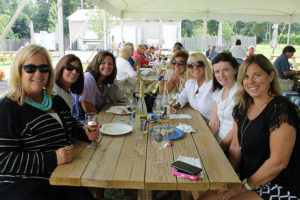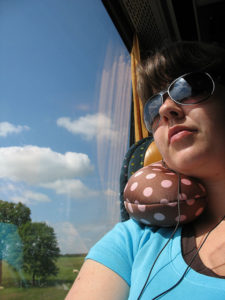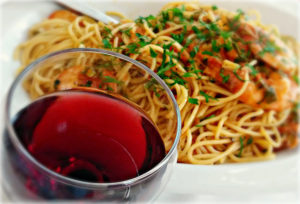Food, and in particular, wine tourism is a fast-growing industry in the United States as well as internationally. In 2015, the World Travel Monitor found that the US was the second outbound travel market for short trips and the largest market for longer trips for leisure purposes. For US tourists, the trend is now to experience more “authentic” and “off the beaten path” destinations rather than you more traditional “touristy” options.

Photo courtesy Flickr user Mid-Atlantic Center for the Arts & Humanities
Food and beverage tourism is one of those areas where growth has been shown over recent years, with US tourist participation rising from 17% in 2007 to 77% just 6 years later in 2013. This growth, according to research studies, is a result of increasing interest in food and beverage. With 48 million Americans identifying themselves as “foodies”, food and beverage tour operators have been responding by creating a variety of gastronomic activities and events to attract as many of these food and beverage lovers as possible.
Specifically, wine tourism has become a critical sub-market of food and beverage tourism, with wine tourism defined as “visitation to vineyards, wineries, wine festivals and wine shows for which grape wine tasting and/or experiencing the attributes of a grape wine region are the prime motivating factors for visitors.”
A new (and relatively short) study accepted last month into the journal Tourism Management Perspectives, aimed to profile a general profile of the US food and beverage tourist and to gain a clearer picture as to what wine tour operators are currently offering in this country in order to achieve a better understanding of wine tourism in the United States as a whole.
Brief Methods
To profile the American food and beverage tourist, a nationwide survey was sent out and 570 completed surveys were returns (all online). Participants were all over the age of 18 and had participated in at least one overnight trip at a minimum distance of 50 miles (80km) from home during the previous year.
In addition to travel information, survey questions also focused on “psychographic characteristics” of respondents, which have been shown in the food sector to reflect how food and beverage tourists are motivated to make activity and purchase decisions.
Wine tour operators were evaluated by analyzing their websites (which were found through a list provided by Zephyr Conferences of operators who have attended the annual Wine Marketing & Tourism Conference). 109 tour operators were analyzed, all of which provide at least one wine tour.
Brief Results
Leisure Travelers/Wine Tourists
- 4% of respondents participated in at least one wine experience in the past year.
- These respondents were subsequently dubbed “wine travelers” by the researchers (which I will refer to as “wine tourists” from here).
- Wine tourists tended to be wealthier and more experienced than other leisure travelers.
- Over 60% of wine tourists had traveled internationally in the past two years.
- Over 50% of wine tourists had taken at least 5 overnight trips in the past year.
- 2% of wine tourists had incomes over $100,000, compared to 30% of the leisure traveler population.
- Generation X claimed the largest number of wine tourist of all the age groups.
- This could be a function of age and income, as theoretically Gen Xers have more money than Millennials simply by the fact that they have been in the workforce longer and Boomers since many of them are likely retired.
- When asked how they identified themselves as tourists, the most common responses for wine tourists included “eclectic”, “authentic”, and “loyalist”.
- This could mean that wine tourists like a variety of wine and food experiences, and prefer their experiences to be authentic and local.
- 78% of wine tourists have visited a winery or wine trail, compared with 24% of leisure travelers.
- In addition to wine activities, 93% of wine tourists are likely to go sightseeing, 85% likely to visit historical or cultural attractions, 81% likely to go shopping, 66% likely to attend major events unrelated to wine, and 60% likely to attend performing arts events.
- In other words, wine tourists like to do other stuff. A lot.
Wine Tour Operators
- The 109 wine tour operators analyzed offered 545 food and beverage packages or tours.
- Half of the tour operators were located in California.
- The most popular destination offered by the wine tour operators was the United States, with most tours focusing in California and Oregon.
- Popular international tour packages included France, Italy, Spain, Argentina, and Chile.
- 69% of the packages offered were daily tours to US destinations.
-

Photo courtesy Flickr user Sheri
70% of packages offered were more traditional guided tours with buses and cars.
- 3% of packages offered were limousine tours.
- 2% of packages offered were jeep tours.
- 11% of packages offered were bicycle tours.
- 3% of packages offered were tours aimed at hikers.
- 1% of packages offered were tours aimed at those interested in other sporting activities.
- 2% of packages offered were train tours.
- 1% of packages offered were riverboat tours.
- Of the most popular tours offered, 97% of them offered wine tasting and 90% of them offered visits to the winery/wineries.
- Other cultural and dining experiences were less popular, since most tours offered were daily and there isn’t enough time in a day to include everything an area may have to offer.
- For the longer tours, such as the international destinations (and in particular, the tours offered in Italy), other gastronomic and cultural activities were included (i.e. cooking classes, dining at famous restaurants, etc).
Conclusions
The results of this study provide a very basic overview of the wine tourist, particularly when compared with other general leisure tourists in the United States. In general, they tend to be older and wealthier, though this is certainly a trait that is not shared across the board and shouldn’t be the primary focus of wine tour operators.
Wine tourists, in addition to obviously enjoying wine-based activities and events, almost always enjoyed participating in activities unrelated to wine, such as attending environmental or cultural attractions.
With “eclectic”, “authentic”, and “loyal” tastes and tendencies, wine tour operators should take note and offer tours and packages that explore a variety of food and wine experiences, as well as other activities unrelated to wine. According to the research on current wine tour operators in the United States, it appears many of them are responding accordingly, though there are still things that can be done to help improve the guest experience.
Since 85-93% of wine tourists said they also like to participate in cultural and other sightseeing events and attractions, it would likely benefit a wine tour operator to include these types of activities in some of their tour packages if they aren’t already doing so. A multidisciplinary approach focused on the authentic and local appear to be what the American

Photo courtesy Flickr user Vassilis
wine tourist is all about, so tailoring wine tours along those ideals should help improve the guest experience and subsequently the company’s bottom line.
It should be noted that these results may not be representative of the entire country as a whole, as the sample size for the wine tourists is relatively small compared to the droves that attend wineries every year in this country. Also, the specific wine tour operators analyzed may subject to sampling bias, as it is unclear how representative this sample is compared to wine tour operators across the entire country. These results provide a basic framework that should be built upon further by more research that captures a better representation of the United States wine tourism market.
Source:
Garibaldi, R., Stone, M.J., Wolf, E., and Pozzi, A. 2017. Wine travel in the United States: A profile of wine travelers and wine tours. Tourism Management Perspectives 23: 53-57.

1 comment for “Wine Tourism in the United States: Profiling the American Wine Tourist and Wine Tour Operators”